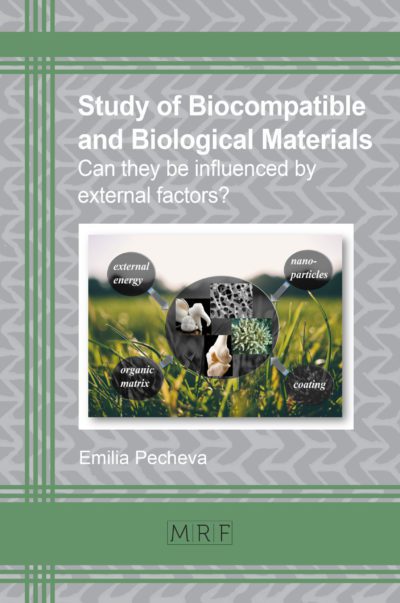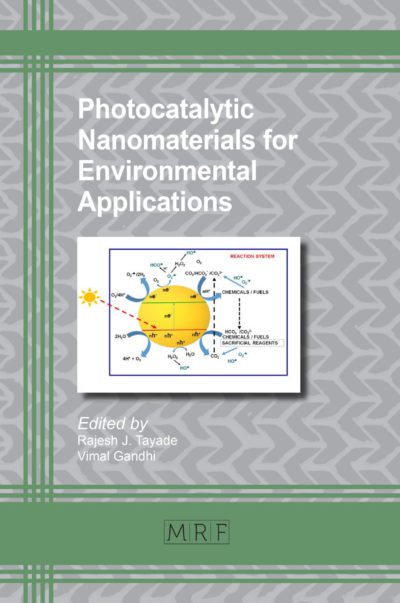Features of the Grinding Technology with the Use of Nanomodified Coolant
Igor I. Artemov, Vladimir D. Krevchik, Sergey A. Nesterov, Dmitry A. Akimov, Natalia E. Artemova
download PDFAbstract. The results of the analysis of the possibility of constructing a system for ensuring the quality of mechanical engineering parts by nanomodification of the surface layer are presented. The implementation is considered on the example of grinding technologies with nanomodified lubricating coolant. Mathematical models describing the process of creating conditions for nanomodification of the surface layer and algorithms for practical implementation are presented.
Keywords
Engineering and Technology, Cavitation, Nanomodification, Nanoparticles
Published online 1/5/2022, 7 pages
Copyright © 2022 by the author(s)
Published under license by Materials Research Forum LLC., Millersville PA, USA
Citation: Igor I. Artemov, Vladimir D. Krevchik, Sergey A. Nesterov, Dmitry A. Akimov, Natalia E. Artemova, Features of the Grinding Technology with the Use of Nanomodified Coolant, Materials Research Proceedings, Vol. 21, pp 443-449, 2022
DOI: https://doi.org/10.21741/9781644901755-73
The article was published as article 73 of the book Modern Trends in Manufacturing Technologies and Equipment
![]() Content from this work may be used under the terms of the Creative Commons Attribution 3.0 licence. Any further distribution of this work must maintain attribution to the author(s) and the title of the work, journal citation and DOI.
Content from this work may be used under the terms of the Creative Commons Attribution 3.0 licence. Any further distribution of this work must maintain attribution to the author(s) and the title of the work, journal citation and DOI.
References
[1] G.A. Kardashev, Physical Methods for Intensification of Chemical Technology Processes, Chemistry Publishing, Moscow, 1990.
[2] S.S. Silin, B.N. Leonov, V.A. Khrulkov, V.A. Poletaev, A.V. Lobanov and N.S. Rykunov, Optimization of Creep-Feed Grinding Technology, Mechanical Engineering Publishing House, Moscow, 1989.
[3] M.A. Promtov, Prospects of cavitation technologies application for intensification of chemical technological processes, TSTU Transactions 14 (2008) 861-869.
[4] B. Shen, P. Kalita, A. Malshe and A. Shih, Performance of novel MoS2 nanoparticles based grinding fluids in minimum quantity lubrication grinding. Transactions of NAMRI/SME 36 (2008) 357-364.
[5] M. Yang, Ch. Li, Y. Zhang, D. Jia, R. Li and W. Ding, Thermodynamic mechanism of nanofluid minimum quantity lubrication cooling grinding and temperature field models, in: M.Sh. Kandelousi (Ed.), Microfluidics and Nanofluidics, IntechOpen Ltd., London, 2018. https://doi.org/10.5772/intechopen.74969
[6] I.I. Artemov, E.M. Kirin, V.D. Krevchik and N.P. Simonov, Method of hard facing of metal part, RU Patent 2560604 С1 (2015).
[7] F. Pashmforoush, R.D. Bagherinia, Influence of water-based copper nanofluid on wheel loading and surface roughness during grinding of Inconel 738 superalloy, J. Clean. Prod. 178 (2018) 363-372. https://doi.org/10.1016/j.jclepro.2018.01.003
[8] V.D. Krevchik, V.O. Sokolov and D.V. Vasin, Acoustically stimulated change in physical and mechanical properties of the surface layer of ferrite products, in: Proceedings of All-Russian Scientific and Technical Conference on Improving Efficiency of Machining Based on Modeling Physical Phenomena, RSATU, Rybinsk, 2009.
[9] A.P. Zhuk, V.A. Skryabin and A.G. Skhirtladze, Features of processing technologies for blade root of diesel turbochargers, Repair, Reconditioning, Modernization 11 (2012) 30-33.
[10] I.I. Artemov, V.D. Krevchik, Acoustic emission under “hidden” growth of microcracks, J. Mach. Manuf. Reliab. 4 (2005) 92-95.
[11] I.I. Artyomov, V.D. Krevchik and N.P. Simonov, The quantum nanocluster formation mechanism in the surface layer of a metal with the chain of microcracks in terms of acoustocapillary effect cavitation mode, University proceedings. Volga region. Technical sciences 4 (2011) 192-204.
[12] I.I. Artemov, V.D. Krevchik, A.V. Rudin, N.E. Artemova, A.A. Voinov, S.B. Menshova, A.V. Sokolov, N.P. Simonov and A.V. Lipov, Method to produce nanostructured layer on surface of metals under conditions of acoustocapillary effect, RU Patent 2547051 C2 (2015).
[13] P.I. Yashcheritsyn, A.G. Zaitsev, Improving the Quality of Ground Surfaces and Cutting Properties of Abrasive Diamond Tools, Science and Technology Publishing House, Minsk, 1972.
[14] E.N. Maslov, Basics of Metal Grinding Theory, Mashgiz Publishing House, Moscow, 1951.
[15] I.I. Artemov, V.D. Krevchik, N.P. Simonov and R.V. Zaytsev, Application of cavitation technologies and nano-modifiers of the process fluid in the surface engineering of machine parts, in: Proceedings of International Conference on Surface Engineering for Research and Industrial Applications (INTERFINISH-SERIA 2014), Novosibirsk, Russia, 30 June-04 July 2014, pp. 43-44.
[16] V.A. Belashov, A.V. Belashov and M.V. Belashov, Technological process editor, Certificate 940187 of Russian Agency for the Protection of Computer Programs, Databases and Topologies of Integrated Circuits (1994).
[17] V.A. Belashov, A.V. Belashov and M.V. Belashov, Operation technology synthesis automation based on the dimensional analysis, University proceedings. Volga region. Technical sciences, 2 (2007) 100-108.














